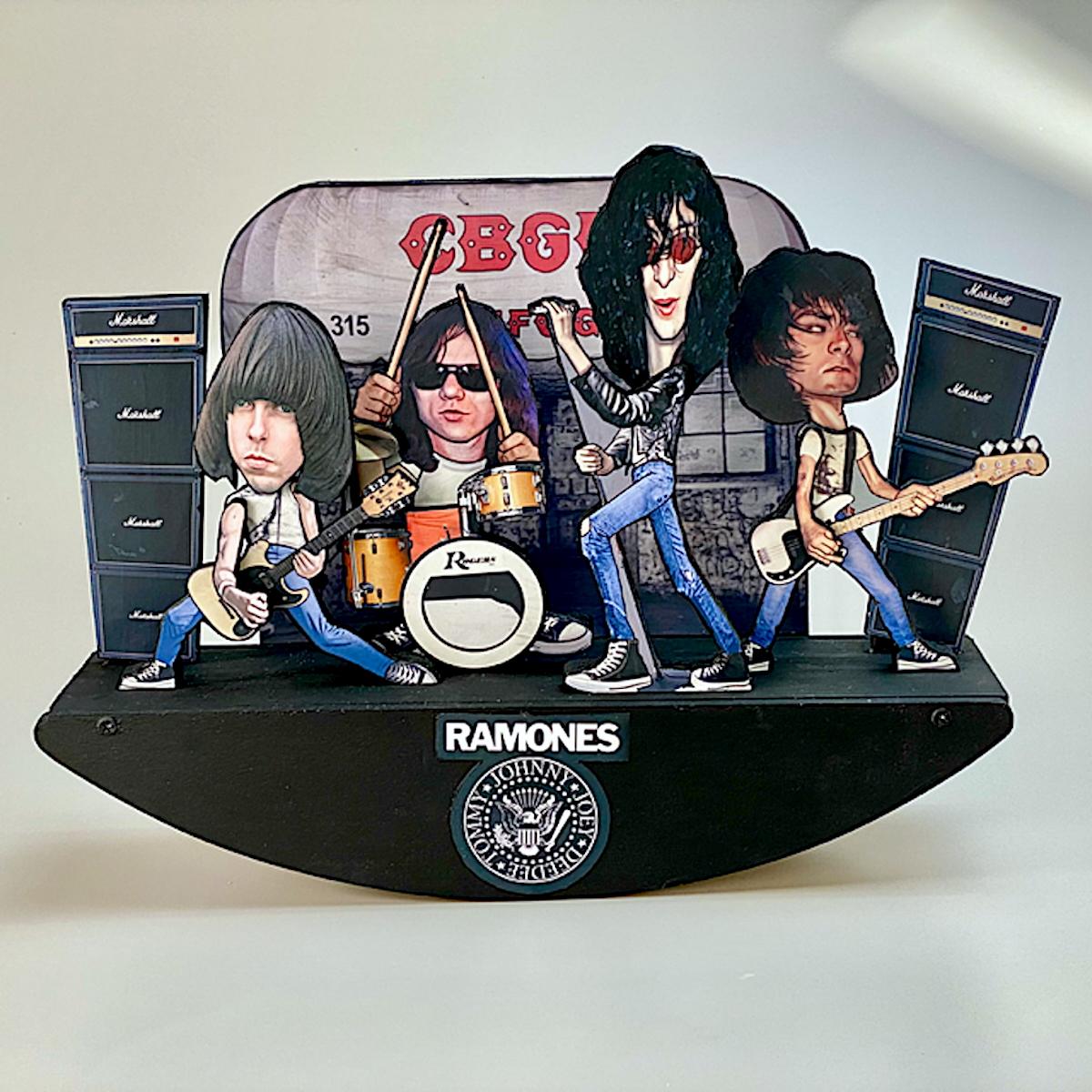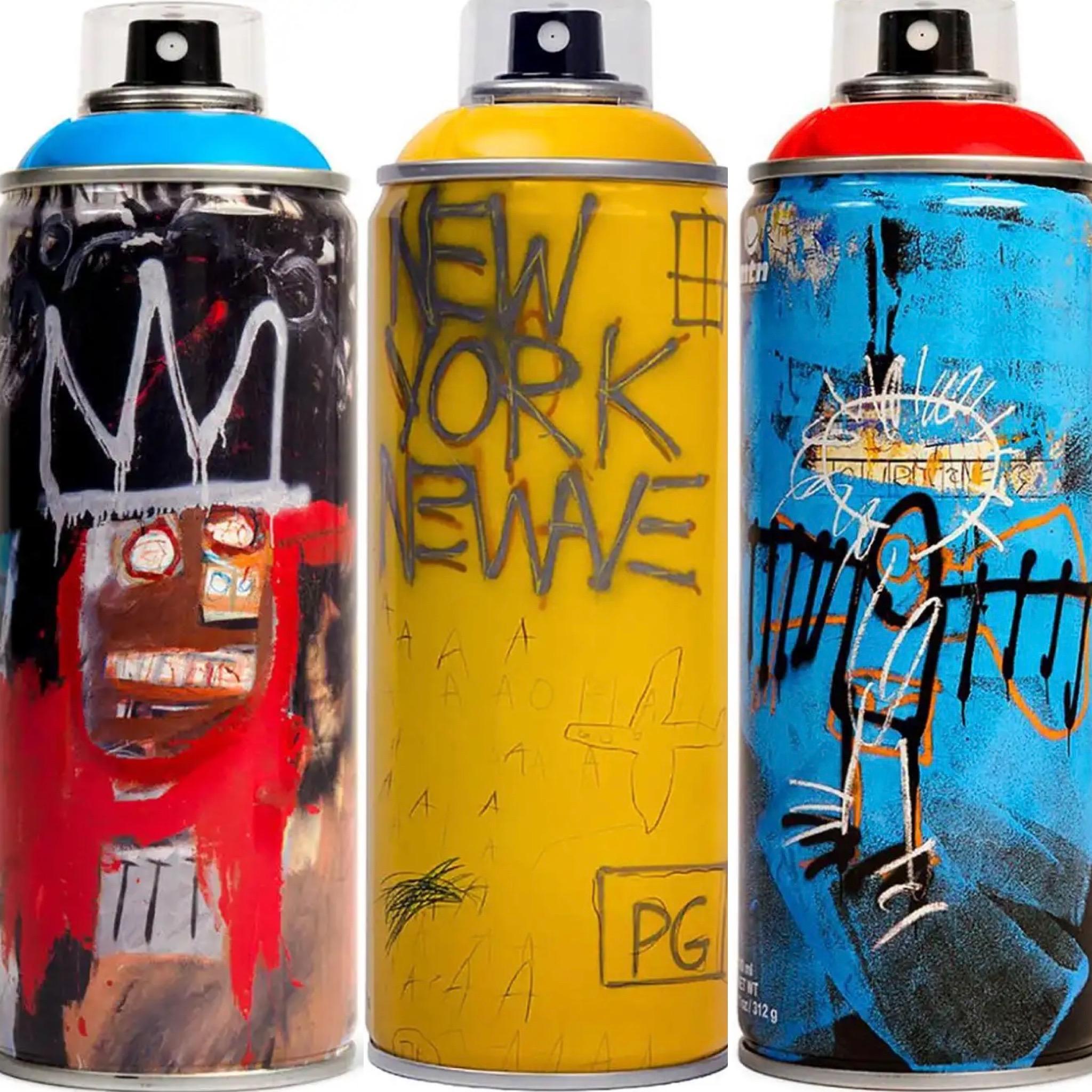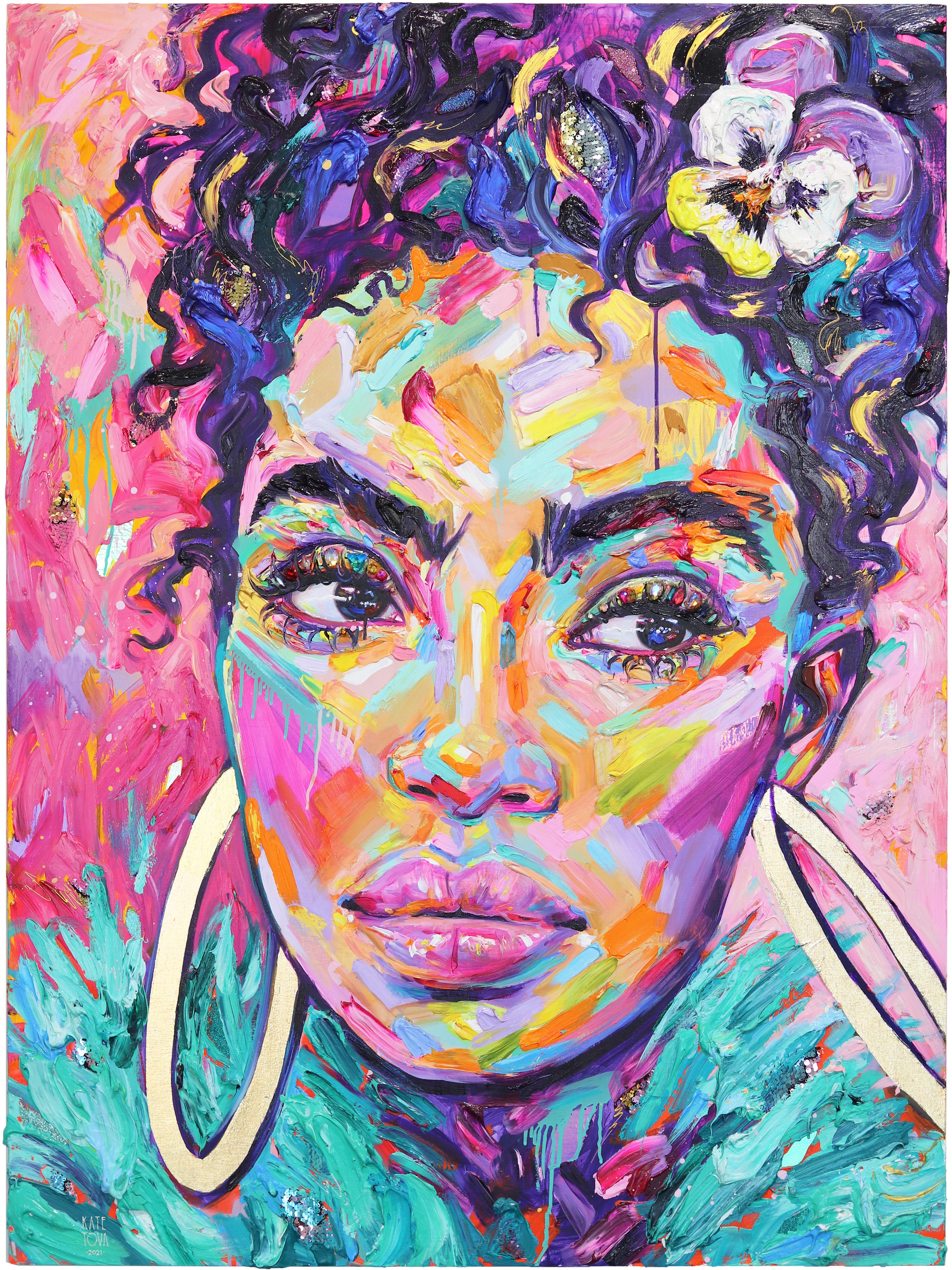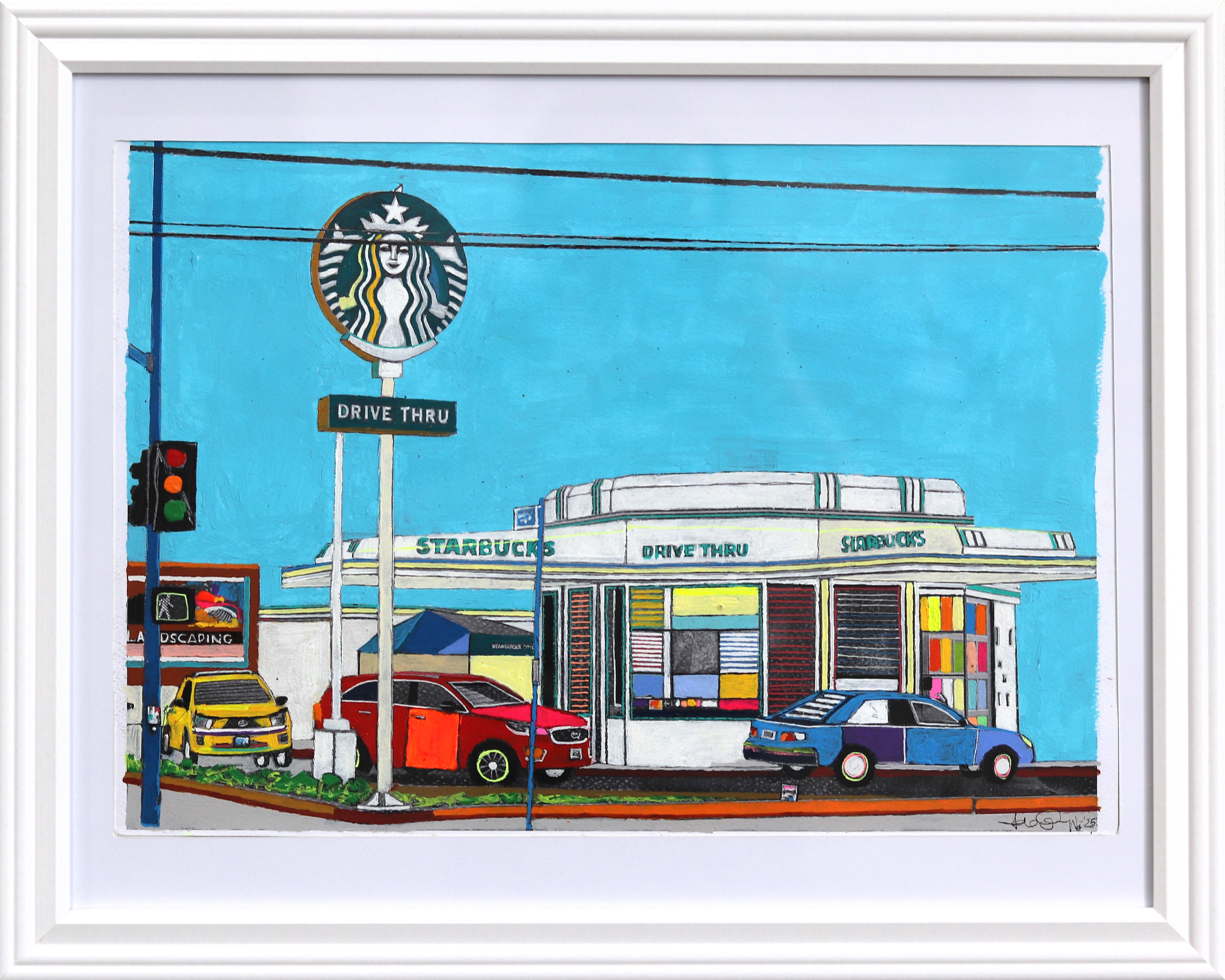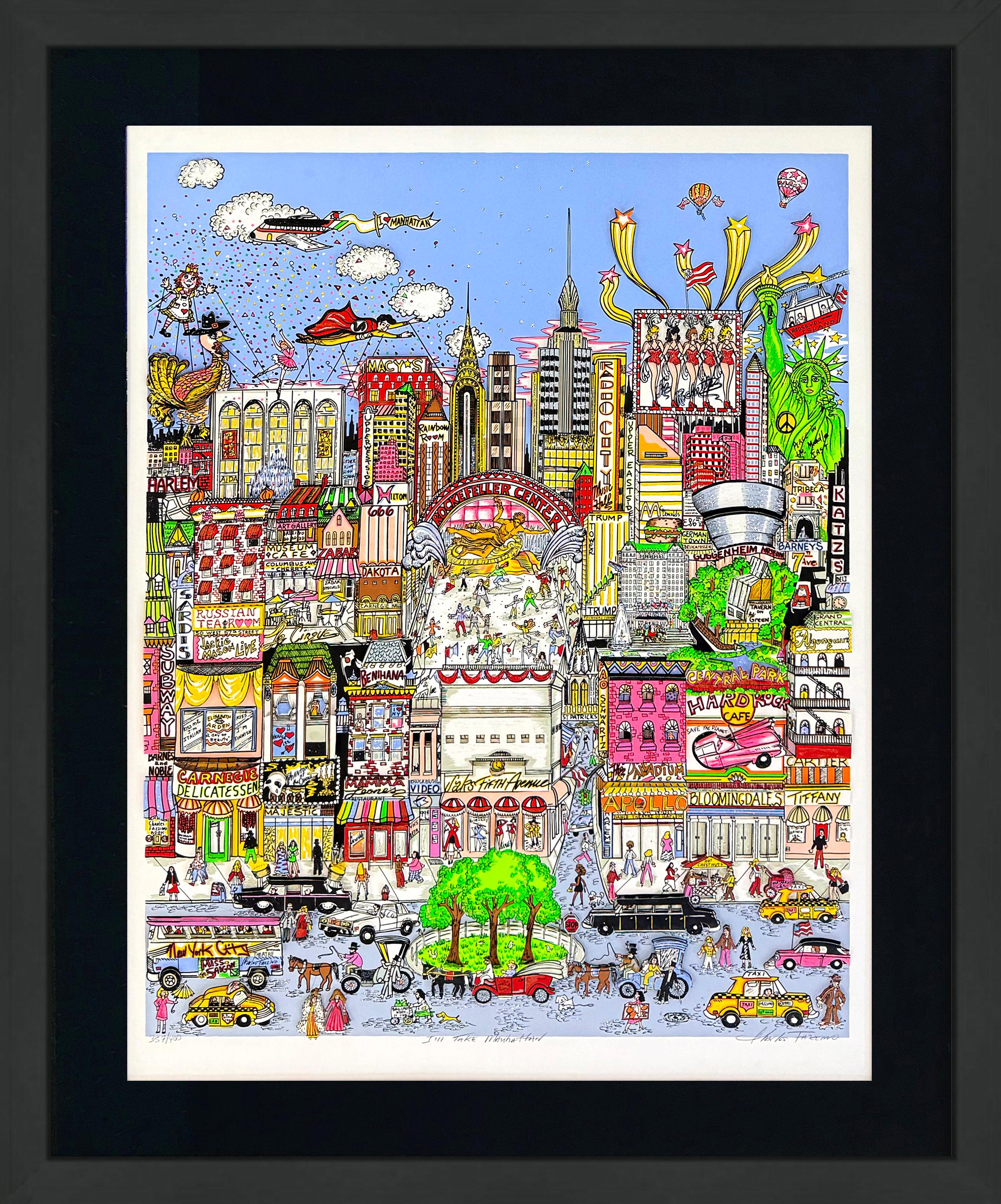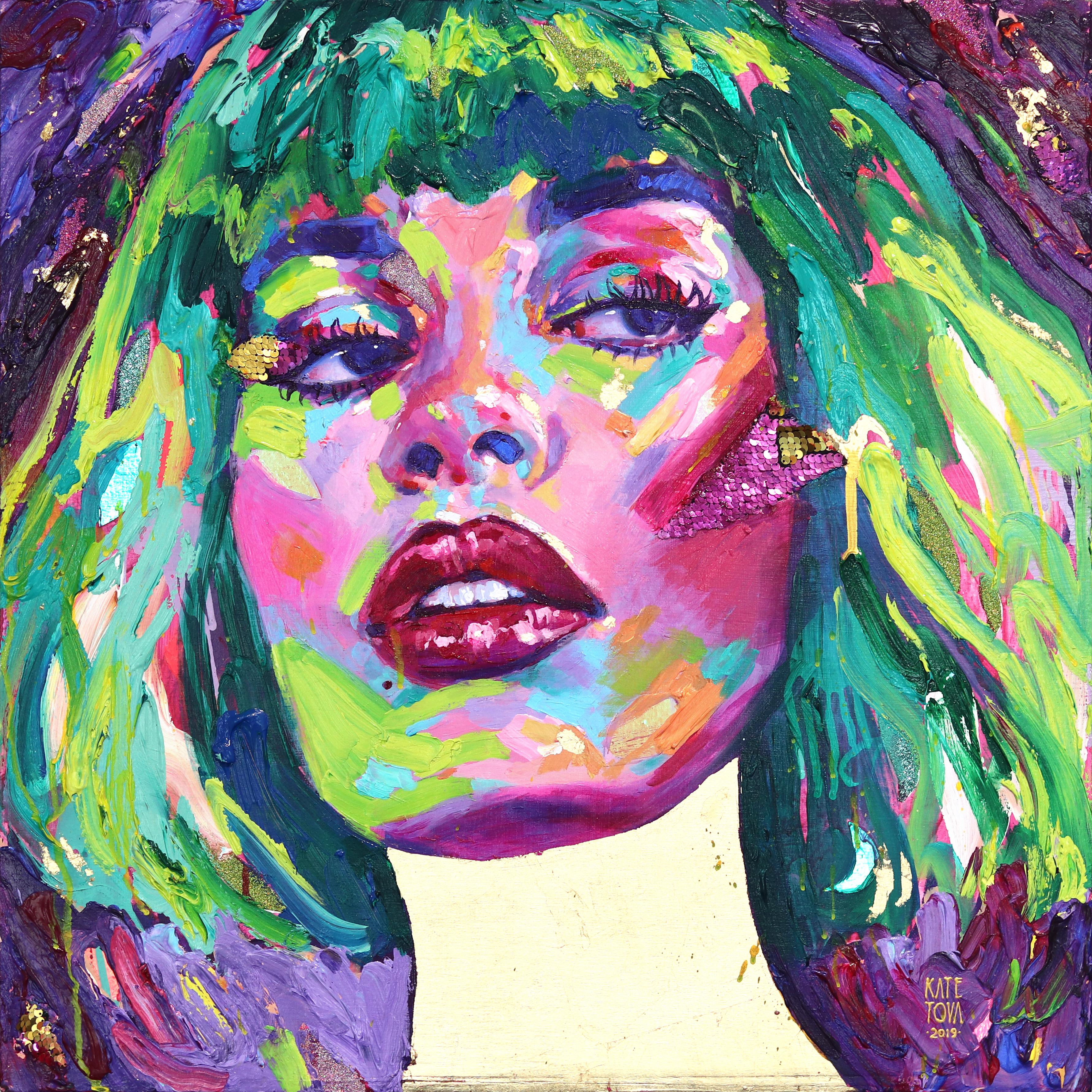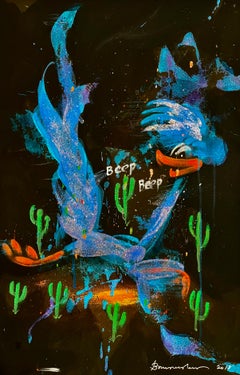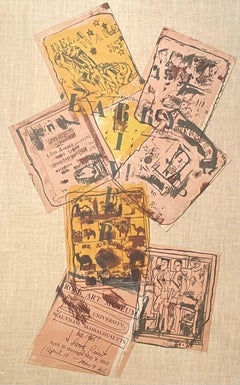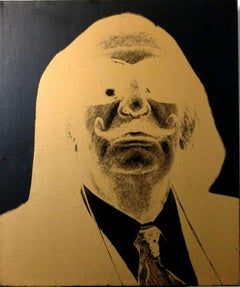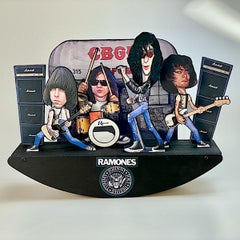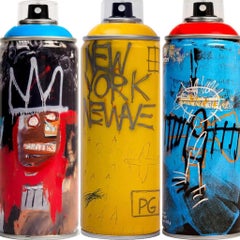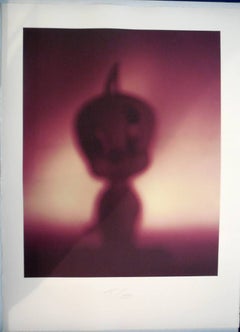
Tweety Bird
View Similar Items
Want more images or videos?
Request additional images or videos from the seller
1 of 5
Todd GrayTweety Bird
$1,500List Price
About the Item
- Creator:Todd Gray (1954, American)
- Dimensions:Height: 30 in (76.2 cm)Width: 22.25 in (56.52 cm)
- Movement & Style:
- Period:
- Condition:
- Gallery Location:Surfside, FL
- Reference Number:1stDibs: LU382138830
About the Seller
4.9
Platinum Seller
Premium sellers with a 4.7+ rating and 24-hour response times
Established in 1995
1stDibs seller since 2014
1,782 sales on 1stDibs
Authenticity Guarantee
In the unlikely event there’s an issue with an item’s authenticity, contact us within 1 year for a full refund. DetailsMoney-Back Guarantee
If your item is not as described, is damaged in transit, or does not arrive, contact us within 7 days for a full refund. Details24-Hour Cancellation
You have a 24-hour grace period in which to reconsider your purchase, with no questions asked.Vetted Professional Sellers
Our world-class sellers must adhere to strict standards for service and quality, maintaining the integrity of our listings.Price-Match Guarantee
If you find that a seller listed the same item for a lower price elsewhere, we’ll match it.Trusted Global Delivery
Our best-in-class carrier network provides specialized shipping options worldwide, including custom delivery.More From This Seller
View AllBruce Helander Road Runner Mixed Media Painting with Glitter Florida Pop Art
By Bruce Helander
Located in Surfside, FL
Bruce Helander
Road Runner (Beep, Beep)
Mixed Media Artwork Hand signed and dated
This is a unique work and is not numbered.
Frame: 31" X 21.25"
Image: 29.5" X 19.5"
This appears to be glitter and paint over a printed background on canvas.
Wile E. Coyote and the Road Runner are a duo of cartoon characters from the Looney Tunes and Merrie Melodies series of animated cartoons, first appearing in 1949. The characters were created for Warner Bros in 1948 by animation director Chuck Jones and writer Michael Maltese
Bruce Helander (1947 -) is an art critic, arts writer, curator and artist whose specialty is collage and assemblage. He has a master’s degree in painting from the prestigious Rhode Island School of Design, where he later became the Provost and Vice President for Academic Affairs of the college. He is a former White House fellow of the National Endowment for the Arts and has won the South Florida Cultural Consortium fellowship for professional achievement in the visual arts. He is one of two 2014 inductees to the Florida Artists Hall of Fame, Florida’s most prestigious arts and culture honor (the other is musician Tom Petty).
Helander is the former Editor-in-Chief of The Art Economist magazine and recently exhibited his work at Georgia Scherman Projects (Toronto), Corzine Fine Art (Los Angeles), Peter Marcelle Gallery (Bridgehampton, New York), Cornell Museum of Art (Delray Beach), and ArtHouse 429 (West Palm Beach). Most currently, his work was shown by Arcature Fine Art at Art Miami and Art Miami New York/Pier 94 and by Tansey Contemporary at Art Wynwood. Helander had a retrospective of his collages and paintings for the Coral Springs Museum of Art, scheduled for 2017, and his collages are included in “Open This End,” a five-year traveling museum show of works from the celebrated Blake Byrne collection in Los Angeles, currently at the Nasher Museum of Art. It included Pop art and Conceptual Art, Minimalism, body-oriented performance art, the Pictures Generation, identity politics and psychologically-inflected figurative works. Andy Warhol, Ed Ruscha, John Baldessari, Cindy Sherman, Louise Lawler, Rita McBride, Bruce Helander, Marlene Dumas, Albert Oehlen, Glenn Ligon, Mark Bradford and more.
His work is in over fifty museum permanent collections, including the Metropolitan Museum of Art, the Solomon R. Guggenheim Museum of Art, the Smithsonian Institution, the Montreal Museum of Art, the Art Institute of Chicago, the Whitney Museum of American Art, the Los Angeles County Museum of Art, the San Francisco Museum of Modern Art, the White House and the Vatican in Rome. His collages have been the subjects of over one hundred exhibitions in North America and Europe, with reviews in leading magazines such as ARTnews and Art in America.
Helander's work is in numerous private collections, including actors Martin Mull and Dennis Hopper, musicians David Byrne and Jimmy Buffett and fashion designer Todd Oldham, as well as numerous corporate commissions.
Prominent artists who collect his work include Dale Chihuly, Robert Rauschenberg, James Rosenquist and Larry Rivers. Football great Dan Marino, Senator Howard Metzenbaum and author Tom Wolfe own Helander work.
City Link magazine called Bruce Helander "arguably the most recognized and successful collage artist in the country.". "If there was a Pulitzer Prize for collage, Helander would surely win it," observed Kenworth Moffett, the former director of the Museum of Fine Arts in Boston, in a feature article in the November 2001 issue of Gold Coast magazine.
His collages appear nationally in leading print media, including The New Yorker magazine. He was commissioned by the United Nations in August 1999 to design a first day postal cover design and limited edition print, which was presented in the General Assembly Building. He has produced prints for the Washington Opera, Ballet Florida and the Palm Beach and Boston Film Festivals.
He has written extensively on contemporary art and in 2007 Grassfield Press will publish a book, titled Fire & Ice, of one hundred of his favorite reviews. He writes a monthly columns in South Florida Times magazine.
Select Exhibitions
2013 Zadok Gallery, 20 Shades of Grey, Miami
2011 Dennis Hopper Estate Sale Exhibition, Christie’s,
2001 Bernice Steinbaum Gallery, A Painting Over the Sofa (that is not necessarily a painting), Miami, Florida
2001 Society of the Four Arts, 63rd Annual National Exhibition of Contemporary American Paintings, Palm Beach, Florida
2000 ArtWest Gallery, RISD on the Road—Printmaking 2000 Woods-Gerry Gallery, RISD on the Road—Printmaking & Photography, Providence, Rhode Island
1999 Armory Art Center, Figurative Small Works, West Rhode Island School of Design, Art in a Box, Providence, Rhode Island
1995 Norton Museum of Art, Group show, West Palm Beach, Florida
1995 Marisa del Re Gallery, Summer group show
1993 Philharmonic Center for Contemporary Art, Greetings From Florida, Naples, Florida (included Robert Rauschenberg, James Rosenquist, Larry Poons, Jules Olitski and Hanson)
1992 Museum of Art, Stars in Florida, Fort Lauderdale, Florida (curated by David Miller; included Larry Rivers, John Chamberlain, Richard Anuszkiewicz)
1991 O. K. Harris Works of Art, Centennial Biennial Invitational, New York, New York
1986 Diane Brown Gallery, RISD in New York, New York, New York (included Jedd Garet, Italo Scanga, Jim Sullivan, Dale Chihuly, Stuart Diamond, Heide Fasnacht)
1986 Forum Gallery, Collages, New York, New York (included Romare Bearden, Varujan Boghsian, Buster Cleveland...
Category
21st Century and Contemporary Pop Art Mixed Media
Materials
Canvas, Glitter, Mixed Media
Original Vintage Pop Art 1965 Collage Lithograph Larry Rivers Poster Brandeis
By Larry Rivers
Located in Surfside, FL
Larry Rivers
Modernist mixed media "Brandeis Show Collage" work on cut paper. (this appears to be a vintage lithograph. It has a label that describes it as watercolor and charcoal...
Category
1960s Pop Art Mixed Media
Materials
Lithograph
Chris Makos Original Gold Silkscreen Painting of Salvador Dali Pop Art
By Christopher Makos
Located in Surfside, FL
Signed Screen Print and Acrylic on Canvas.
Christopher Makos, American photographer and artist, apprenticed with photographer Man Ray in Paris and collaborated with Andy Warhol, whom he showed how to use his first camera. He introduced Warhol to the work of both Jean-Michel Basquiat and Keith Haring. Makos' work has been in the permanent collections of more than 100 museums and major private collections, including those of Malcolm Forbes, Pedro Almodóvar, and Gianni Versace.
His photographs of Warhol, Haring, Tennessee Williams and others have been auctioned regularly at Sotheby's. Warhol called Makos the "most modern photographer in America".
Chris Makos...
Category
20th Century Pop Art Mixed Media
Materials
Canvas, Acrylic
Mr. Magoo Original Vintage Animation Cel Hand Drawing Painting
By Jules Engel
Located in Surfside, FL
Born in 1918 in Budapest, Hungary, Engel began his professional career in animation as a color designer at the Walt Disney studio. Although his credits include work on such classics as Disney’s Bambi...
Category
Mid-20th Century Pop Art Figurative Drawings and Watercolors
Materials
Mixed Media
Conceptual Pop Art Color Oil Monotype Painting Abstract Figure Robin Winters
By Robin Winters
Located in Surfside, FL
Robin Winters (American, born 1950),
Untitled (Red Face) from "Cherry Block Series" 1986, monotype, pencil signed and dated lower right, plate: 6"h x 8.5"w, overall (with frame): 22.25"h x 18.25"w. Provenance: Property from a Private Collection, San Francisco.
Winters was invited to make monotypes at Experimental Workshop in San Francisco, (they printed Richard Bosman, Sam Francis, Claire Falkenstein, Deborah Oropallo and Kenneth Noland and many more greats). Winters chose to paint on wood blocks rather than the more usual metal plates in order to capture the organic quality of the natural material. He exploited a salient characteristic of the monoprint in Ghost Story by adding new painted elements onto the increasingly faint ghost images that result from successive impressions from a single block. In so doing he achieved the effect of transparent layers of color and shadow imagery. Winters's brightly-colored monotypes portray an array of figures and landscapes (and an occasional still-life) that, although can be seen in the context of a general trend away from abstraction that has marked the 1980s, defy strict stylistic categorization. They are neither realistic nor abstract, psychological self-examinations nor narrative fictions, but they contain elements of all of these approaches. Like Jonathan Borofsky, Winters derives much of his subject matter from dreams, believing that through his private fears and obsessions he can touch similar emotions in others. Although at first glance Winters's images look as if they could have been made by a child, closer attention reveals sly art historical references to Jackson Pollock and Pattern Painting (the drip and splatter backgrounds), Mark Rothko (the three-part horizontal compositions) and Minimalism (the gridded Cherry Block Series: Bread Beat).
Robin Winters (born 1950 in Benicia, California) is an American conceptual, multi-disciplinary, artist and teacher based in New York. Winters is known for creating solo exhibitions containing an interactive durational performance component to his installations, sometimes lasting up to two months. Winters first emerged in the burgeoning Soho NYC art scene of the 1970s. An early practitioner of the Relational Aesthetics (social interaction as an art medium) Winters also created in works through sculpture, installation, performance, painting, drawing and prints. His art maintains a whimsical spirit, and he often returns to ongoing themes involving faces, boats, cars, bottles, hats and jesters or fools. Winters has incorporated such devices as blind dates, double dates, dinners, fortune telling, and free consultation in his performances. Throughout his career he has engaged in a wide variety of media, such as performance art, film, video, writing prose and poetry, photography, installation art, printmaking, drawing, painting, ceramic sculpture, bronze sculpture, and glassblowing.
Winters was born in Benicia, California in 1950 to lawyer parents. As a child his hobby was collecting glass bottles found on the beach and under old buildings, which would later influence him as an artist. In 1968, Winters had his first durational performance, entitled Norman Thomas Travelling Museum. The artist drove a Volkswagen bus decorated in collage, many of the images relating to current events and politics. Inside was what the artist described as a “reliquary” containing many objects, including a bottle collection. Winters took the van to shopping centers and even as far as Mexico. That same year, Winters opted not to register for the military draft. Although he was deemed fit to serve, Winters refused. In 1975 the resulting legal proceedings finally came to a close after it was proven that the artist had been harassed by the local draft board. In his teens and early twenties, Winters became acquainted with several local artists who helped shape his aesthetic, most notably Manuel Neri and Robert Arneson. By the early 1970s, Winters was studying at the San Francisco Art Institute (SFAI) and had relocated to San Francisco. At this time Winters became friends with the Bay Area conceptual artists Terry Fox and Howard Fried, and participated in several of Fried's performance works. In 1972 Winters was accepted into the Whitney Independent Study Program in New York City. After coming to New York City, Winters helped support himself by working for various artists, among them the performance artist Joan Jonas and sculptor Donald Judd. In 1974, Winters performed The Secret Life of Bob-E or Bob-E Behind the Veil eight hours a day, five days a week for a month in his studio apartment. Behind a one-way mirror the audience could watch Winters play the character of Bob-E, whose goal was to make a monument for everyone in the world in the form of blue and yellow rubber top hats. By the end of the month the artist had constructed 262 hats. The following year, Winters was invited to take part in the Whitney Museum's 1975 Biennial Exhibition. Entitled W.B. Bearman Bags a Job or Diary of a Dreamer. Winters was traveling in 1975 and 1976, spending time in North Africa and in Europe. At a time when most young American artists were unaware of their European counterparts, Winters met and was influenced by such artists as Sigmar Polke and Marcel Broodthaers (with whom Winters worked on an installation) and also had a one-person exhibition, at the Konrad Fischer Gallery in Dusseldorf. Returning to New York in 1976, Winters teamed up with a group of artists to form Collaborative Projects (Colab), a rather anarchistic organization dedicated to artistic collaboration and the creation of art that questioned social values.. Also in 1976, Winters formed the partnership “X&Y” with fellow artist Coleen Fitzgibbon that would last two years. Together they performed a series of shows in the Netherlands, most notably a show entitled Take the Money and Run. Performed at De Appel in Amsterdam, the show involved the artists robbing their audience. The following day the audience was given an apology, as well as the opportunity to retrieve any valuables and participate in a lottery to win the artists’ services. They also made a Super 8 film in NY called Rich-Poor, in which they asked people on the streets their thoughts on the rich and poor.
In 1980 Winters participated in The Real Estate Show and in Absurdities at ABC No Rio. That same year he and artists Peter Fend, Coleen Fitzgibbon, Peter Nadin, Jenny Holzer, and Richard Prince also formed The Offices of Fend, Fitzgibbon, Holzer, Nadin, Prince & Winters. This short-lived collective was based out of an office on lower Broadway and offered “Practical Esthetic Services Adaptable to Client Situation”, as stated on their business card. Their goal was to offer their art as “socially helpful work for hire”. In June of that year Winters participated in The Times Square Show, Colab's most well-known exhibition. The month-long show took place in a four floor building on West 41st Street and was densely packed with art. To cap off a busy year, Winters also became one of the first artists to join the Mary Boone Gallery, showing a successful solo exhibition in 1981. His work was shown in the New York/New Wave show in 1981 at MoMA PS1 along with Jean-Michel Basquiat, Roberta Bayley, William S. Burroughs, David Byrne, Sarah Charlesworth, Larry Clark, Crash (John Matos), Ronnie Cutrone, Brian Eno, Peter Fend, Nan Goldin, Keith Haring, Ray Johnson, Joseph Kosuth, Marcus Leatherdale, Christopher Makos, Robert Mapplethorpe, Elaine Mayes, Frank Moore, Kenny Scharf and others. In 1982, Winters had his first solo exhibition in Los Angeles at the Richard Kuhlenschmidt Gallery. At the Mo David Gallery in 1984, Winters created an installation piece that consisted of a floor of plaster tiles. Underneath each tile, hidden from view, was a drawing. He designed the stage sets for the musician Nico, and assisted French artist Orlan, American artist Stuart Sherman, and American poet Gregory Corso. Two years later Winters was invited to take part in Chambres d’Amis (In Ghent there is Always a Free Room for Albrecht Durer) in Ghent, Belgium. In it, 51 artists created installations in 50 different sites, mostly private homes. Winters chose the home of a local art historian. The artist made 90 drawings based on images found in the large collection of art books in the home's library. He made two copies of each drawing and placed the originals in the books themselves. One set of copies was exhibited in the sponsoring museum, Museum van Hedendaagse, as "The Ghent Drawings". The drawings were also on display at Winters’ solo exhibition at Luhring Augustine & Hodes Gallery in New York City in 1987.
In 1986, Winters had a solo exhibition at Maurice Keitelman Gallery in Brussels, Belgium, and the following year a solo exhibition at the Centre Régional d'Art Contemporain Midi-Pyrénées in Toulouse, France. Also in 1986, Winters' Playroom was held at the Institute for Contemporary Art in Boston, Massachusetts. The exhibition was part of Think Tank, a retrospective of Winters' work which traveled to the Stedelijk Museum in the Netherlands, the Centre Regional d’Art Contemporain in France, and the Contemporary Arts Center in Ohio. Winters spent a month in 1989 working with students at the San Francisco Art Institute. Never having worked with ceramics, he spent the month making numerous ceramic pieces, which were then shown in the aptly named One Month in San Francisco. Other components of the piece included Winters’ childhood bottle collection and a video showing each piece in the show filmed briefly next to a ruler.[ Also that year, Robin served as a visiting artist at the Pilchuck Glass School, where he met artist John Drury, who was then working as the school's artist liaison.
In the summer of 1990, Winters interviewed fellow artist Kiki Smith for her eponymous book, which was published later that year. That same year (1990), Winters was invited by the Val Saint Lambert glass factory in Belgium to create glassworks in their facility. Winters, artists John Drury and Tracy Glover...
Category
1980s Pop Art Figurative Paintings
Materials
Monoprint, Monotype
Conceptual Pop Art Color Oil Monotype Painting Abstract Figure Robin Winters
By Robin Winters
Located in Surfside, FL
Robin Winters (American, born 1950),
Untitled (Red Face) from "Cherry Block Series" 1986, monotype, pencil signed and dated lower right, plate: 6"h x 8.5"w, overall (with frame): 22.25"h x 18.25"w. Provenance: Property from a Private Collection, San Francisco.
Winters was invited to make monotypes at Experimental Workshop in San Francisco, (they printed Richard Bosman, Sam Francis, Claire Falkenstein, Deborah Oropallo and Kenneth Noland and many more greats). Winters chose to paint on wood blocks rather than the more usual metal plates in order to capture the organic quality of the natural material. He exploited a salient characteristic of the monoprint in Ghost Story by adding new painted elements onto the increasingly faint ghost images that result from successive impressions from a single block. In so doing he achieved the effect of transparent layers of color and shadow imagery. Winters's brightly-colored monotypes portray an array of figures and landscapes (and an occasional still-life) that, although can be seen in the context of a general trend away from abstraction that has marked the 1980s, defy strict stylistic categorization. They are neither realistic nor abstract, psychological self-examinations nor narrative fictions, but they contain elements of all of these approaches. Like Jonathan Borofsky, Winters derives much of his subject matter from dreams, believing that through his private fears and obsessions he can touch similar emotions in others. Although at first glance Winters's images look as if they could have been made by a child, closer attention reveals sly art historical references to Jackson Pollock and Pattern Painting (the drip and splatter backgrounds), Mark Rothko (the three-part horizontal compositions) and Minimalism (the gridded Cherry Block Series: Bread Beat).
Robin Winters (born 1950 in Benicia, California) is an American conceptual, multi-disciplinary, artist and teacher based in New York. Winters is known for creating solo exhibitions containing an interactive durational performance component to his installations, sometimes lasting up to two months. Winters first emerged in the burgeoning Soho NYC art scene of the 1970s. An early practitioner of the Relational Aesthetics (social interaction as an art medium) Winters also created in works through sculpture, installation, performance, painting, drawing and prints. His art maintains a whimsical spirit, and he often returns to ongoing themes involving faces, boats, cars, bottles, hats and jesters or fools. Winters has incorporated such devices as blind dates, double dates, dinners, fortune telling, and free consultation in his performances. Throughout his career he has engaged in a wide variety of media, such as performance art, film, video, writing prose and poetry, photography, installation art, printmaking, drawing, painting, ceramic sculpture, bronze sculpture, and glassblowing.
Winters was born in Benicia, California in 1950 to lawyer parents. As a child his hobby was collecting glass bottles found on the beach and under old buildings, which would later influence him as an artist. In 1968, Winters had his first durational performance, entitled Norman Thomas Travelling Museum. The artist drove a Volkswagen bus decorated in collage, many of the images relating to current events and politics. Inside was what the artist described as a “reliquary” containing many objects, including a bottle collection. Winters took the van to shopping centers and even as far as Mexico. That same year, Winters opted not to register for the military draft. Although he was deemed fit to serve, Winters refused. In 1975 the resulting legal proceedings finally came to a close after it was proven that the artist had been harassed by the local draft board. In his teens and early twenties, Winters became acquainted with several local artists who helped shape his aesthetic, most notably Manuel Neri and Robert Arneson. By the early 1970s, Winters was studying at the San Francisco Art Institute (SFAI) and had relocated to San Francisco. At this time Winters became friends with the Bay Area conceptual artists Terry Fox and Howard Fried, and participated in several of Fried's performance works. In 1972 Winters was accepted into the Whitney Independent Study Program in New York City. After coming to New York City, Winters helped support himself by working for various artists, among them the performance artist Joan Jonas and sculptor Donald Judd. In 1974, Winters performed The Secret Life of Bob-E or Bob-E Behind the Veil eight hours a day, five days a week for a month in his studio apartment. Behind a one-way mirror the audience could watch Winters play the character of Bob-E, whose goal was to make a monument for everyone in the world in the form of blue and yellow rubber top hats. By the end of the month the artist had constructed 262 hats. The following year, Winters was invited to take part in the Whitney Museum's 1975 Biennial Exhibition. Entitled W.B. Bearman Bags a Job or Diary of a Dreamer. Winters was traveling in 1975 and 1976, spending time in North Africa and in Europe. At a time when most young American artists were unaware of their European counterparts, Winters met and was influenced by such artists as Sigmar Polke and Marcel Broodthaers (with whom Winters worked on an installation) and also had a one-person exhibition, at the Konrad Fischer Gallery in Dusseldorf. Returning to New York in 1976, Winters teamed up with a group of artists to form Collaborative Projects (Colab), a rather anarchistic organization dedicated to artistic collaboration and the creation of art that questioned social values.. Also in 1976, Winters formed the partnership “X&Y” with fellow artist Coleen Fitzgibbon that would last two years. Together they performed a series of shows in the Netherlands, most notably a show entitled Take the Money and Run. Performed at De Appel in Amsterdam, the show involved the artists robbing their audience. The following day the audience was given an apology, as well as the opportunity to retrieve any valuables and participate in a lottery to win the artists’ services. They also made a Super 8 film in NY called Rich-Poor, in which they asked people on the streets their thoughts on the rich and poor.
In 1980 Winters participated in The Real Estate Show and in Absurdities at ABC No Rio. That same year he and artists Peter Fend, Coleen Fitzgibbon, Peter Nadin, Jenny Holzer, and Richard Prince also formed The Offices of Fend, Fitzgibbon, Holzer, Nadin, Prince & Winters. This short-lived collective was based out of an office on lower Broadway and offered “Practical Esthetic Services Adaptable to Client Situation”, as stated on their business card. Their goal was to offer their art as “socially helpful work for hire”. In June of that year Winters participated in The Times Square Show, Colab's most well-known exhibition. The month-long show took place in a four floor building on West 41st Street and was densely packed with art. To cap off a busy year, Winters also became one of the first artists to join the Mary Boone Gallery, showing a successful solo exhibition in 1981. His work was shown in the New York/New Wave show in 1981 at MoMA PS1 along with Jean-Michel Basquiat, Roberta Bayley, William S. Burroughs, David Byrne, Sarah Charlesworth, Larry Clark, Crash (John Matos), Ronnie Cutrone, Brian Eno, Peter Fend, Nan Goldin, Keith Haring, Ray Johnson, Joseph Kosuth, Marcus Leatherdale, Christopher Makos, Robert Mapplethorpe, Elaine Mayes, Frank Moore, Kenny Scharf and others. In 1982, Winters had his first solo exhibition in Los Angeles at the Richard Kuhlenschmidt Gallery. At the Mo David Gallery in 1984, Winters created an installation piece that consisted of a floor of plaster tiles. Underneath each tile, hidden from view, was a drawing. He designed the stage sets for the musician Nico, and assisted French artist Orlan, American artist Stuart Sherman, and American poet Gregory Corso. Two years later Winters was invited to take part in Chambres d’Amis (In Ghent there is Always a Free Room for Albrecht Durer) in Ghent, Belgium. In it, 51 artists created installations in 50 different sites, mostly private homes. Winters chose the home of a local art historian. The artist made 90 drawings based on images found in the large collection of art books in the home's library. He made two copies of each drawing and placed the originals in the books themselves. One set of copies was exhibited in the sponsoring museum, Museum van Hedendaagse, as "The Ghent Drawings". The drawings were also on display at Winters’ solo exhibition at Luhring Augustine & Hodes Gallery in New York City in 1987.
In 1986, Winters had a solo exhibition at Maurice Keitelman Gallery in Brussels, Belgium, and the following year a solo exhibition at the Centre Régional d'Art Contemporain Midi-Pyrénées in Toulouse, France. Also in 1986, Winters' Playroom was held at the Institute for Contemporary Art in Boston, Massachusetts. The exhibition was part of Think Tank, a retrospective of Winters' work which traveled to the Stedelijk Museum in the Netherlands, the Centre Regional d’Art Contemporain in France, and the Contemporary Arts Center in Ohio. Winters spent a month in 1989 working with students at the San Francisco Art Institute. Never having worked with ceramics, he spent the month making numerous ceramic pieces, which were then shown in the aptly named One Month in San Francisco. Other components of the piece included Winters’ childhood bottle collection and a video showing each piece in the show filmed briefly next to a ruler.[ Also that year, Robin served as a visiting artist at the Pilchuck Glass School, where he met artist John Drury, who was then working as the school's artist liaison.
In the summer of 1990, Winters interviewed fellow artist Kiki Smith for her eponymous book, which was published later that year. That same year (1990), Winters was invited by the Val Saint Lambert glass factory in Belgium to create glassworks in their facility. Winters, artists John Drury and Tracy Glover...
Category
1980s Pop Art Figurative Paintings
Materials
Monoprint, Monotype
You May Also Like
Working contemporary Rocker sculpture pop art hand made interior
Located in New York, NY
Hand made working rock back and forth toy
He is represented by Krause Gallery in NYC
Steve Casino resides in Kentucky, but as he quips the small town atmosphere doesn't mean he isn'...
Category
2010s Pop Art Mixed Media
Materials
Metal, Wire
Limited edition Basquiat spray paint can set
By Jean-Michel Basquiat
Located in NEW YORK, NY
Limited Edition Jean-Michel Basquiat spray paint can set published circa 2017 featuring the Estate trademark of Jean-Michel Basquiat. A unique Basquiat collector’s set that makes for...
Category
1980s Pop Art Mixed Media
Materials
Metal
Summer - Abstract Vibrant Colorful Mixed Media Figurative Portrait Painting
By Kate Tova
Located in Los Angeles, CA
Vibrant multimedia artworks incorporate reflective mediums and thick textures in Kate Tova's work. Colors splash across the page melding into flourishes of sequins, rhinestones, and ...
Category
21st Century and Contemporary Pop Art Mixed Media
Materials
Gold Leaf
That Weekend At The Jersey Shore (large signed 3D mixed media serigraph)
By Charles Fazzino
Located in Aventura, FL
3D constructed mixed media serigraph on paper. Hand signed lower right by Charles Fazzino. Hand numbered 32/200 lower left. Artwork size 16 x 39 inches. Frame size 26.5 x 49.75 i...
Category
21st Century and Contemporary Pop Art Mixed Media
Materials
Mixed Media, Screen
$2,962 Sale Price
25% Off
Drive Through - Original Colorful Los Angeles Urban Starbucks Still Life Artwork
By Fabio Coruzzi
Located in Los Angeles, CA
Italian artist Fabio Coruzzi merges painting and photography into one imaginative image that offers a new outlook on an otherwise ordinary urban scene. His artworks represent an auth...
Category
21st Century and Contemporary Pop Art Mixed Media
Materials
Paper, Oil Pastel, Mixed Media, Acrylic, Graphite, Gel Pen
More Bang for the Buck! (signed 3D mixed media serigraph)
By Charles Fazzino
Located in Aventura, FL
3D constructed mixed media serigraph on paper. Hand signed lower right by Charles Fazzino. Hand numbered 347/400 lower left. Artwork size 10 x 5.5 inches. Frame size 18.25 x 14 i...
Category
21st Century and Contemporary Pop Art Mixed Media
Materials
Mixed Media, Screen
$1,462 Sale Price
25% Off


